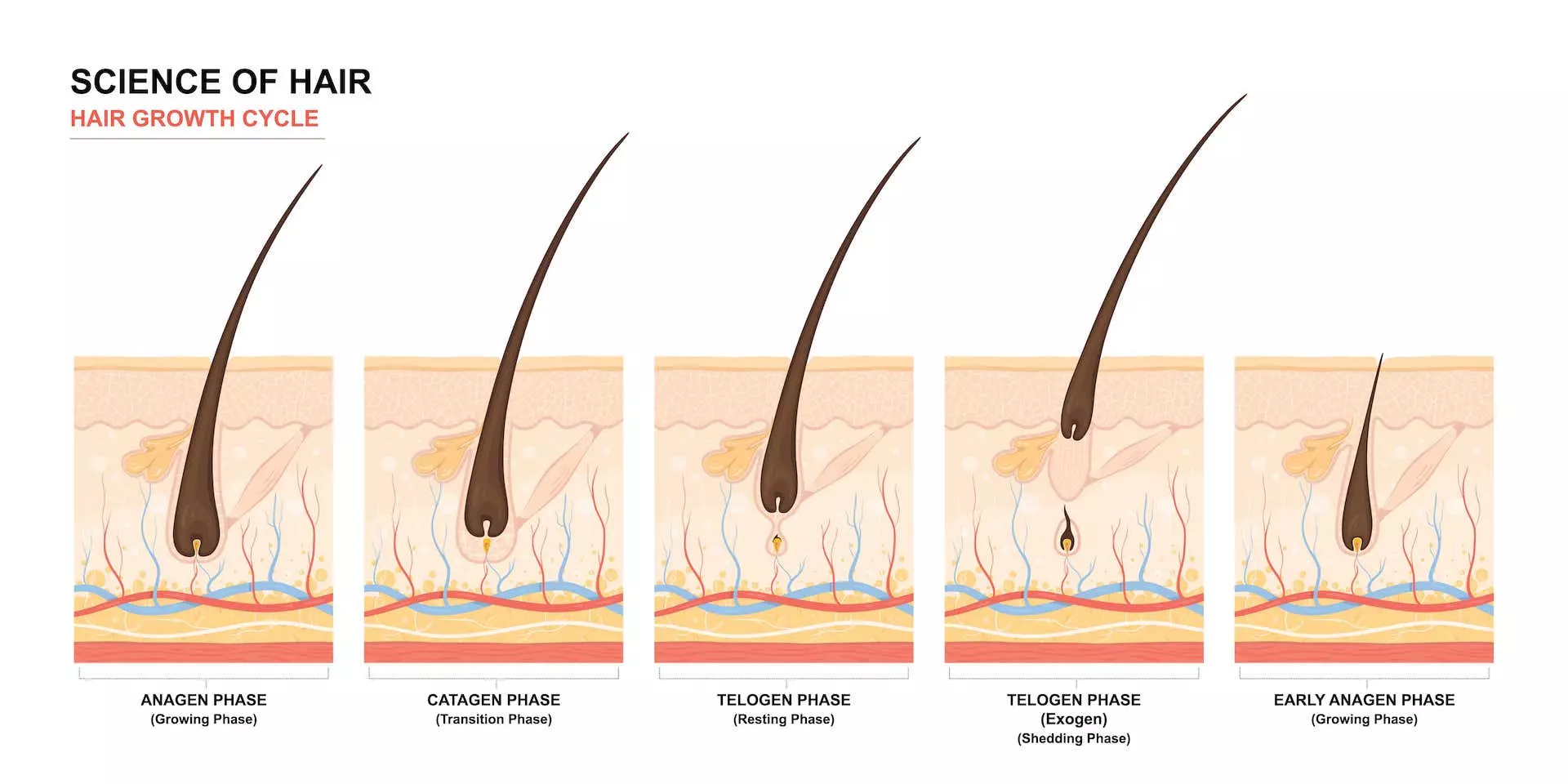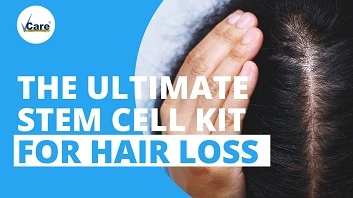Generally known as the anagen phase, the hair growth phase begins in the papilla and lasts from two to six years. Genetical factors play a major role in deciding the span of hair in this phase. The longer the hair stays in the anagen phase, the longer it grows. During this phase, cells in the papilla get divided to produce new hair fibres, and the follicle buries itself into the dermal layer of the skin to nourish the strand. About 85% of the hairs on one's head are in the anagen phase at any given time.
Signals sent out by the body (that only selectively affect one per cent of all hair of one's body at any given time) determine when the anagen phase ends and the catagen phase begins. The first sign of catagen advent is the cessation of melanin production in the hair bulb and follicular melanocytes apoptosis. The catagen phase, also known as the transitional phase, allows the follicle to renew itself.
During this time, which lasts about two weeks, the hair follicle shrinks due to disintegration, and the papilla detaches and "rests," cutting the hair strand off from its nourishing blood supply. Ultimately, the follicle is 1/6 of its original length, causing the hair shaft to be pushed upward. While hair is not growing during this phase, the length of the terminal fibres increases when the follicle makes them upward.
The telogen or resting phase witnesses the follicle is remaining dormant for one to four months. Ten to 15 per cent of the hairs on one's head are in this phase of growth at any given time. In this phase, the epidermal cells lining the follicle channel continue to grow as expected. They may accumulate around the hair base, temporarily anchoring it in place and preserving the hair for its natural purpose without taxing the body's resources needed during the growth phase.
At some point, the follicle will begin to grow again, softening the shaft's anchor point initially. The hair base will break free from the root, and the hair will be shed. Within two weeks, a new hair shaft will begin to emerge once the telogen phase is completed. The process results in average hair loss, known as shedding.

















